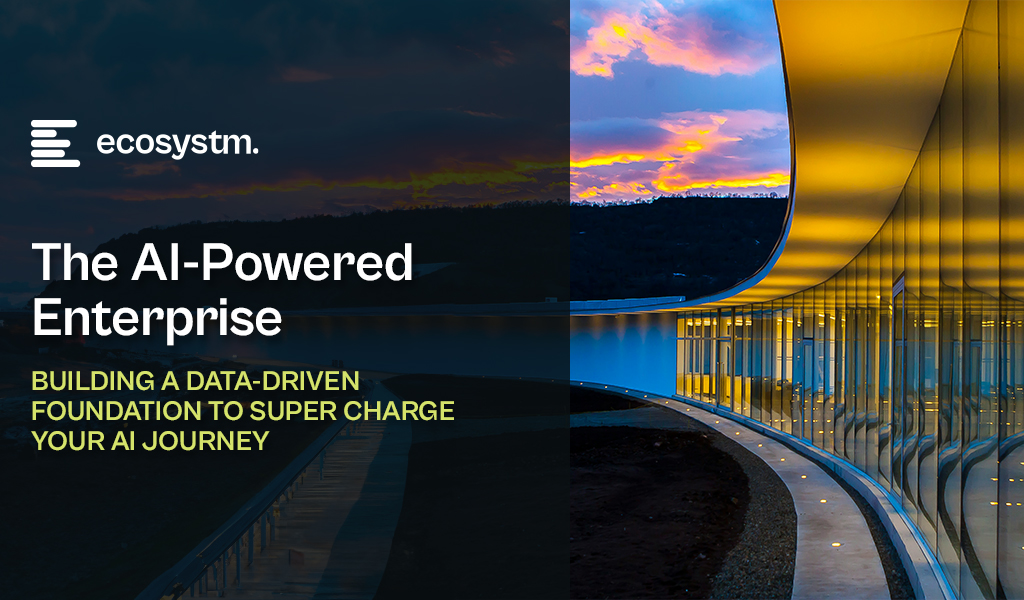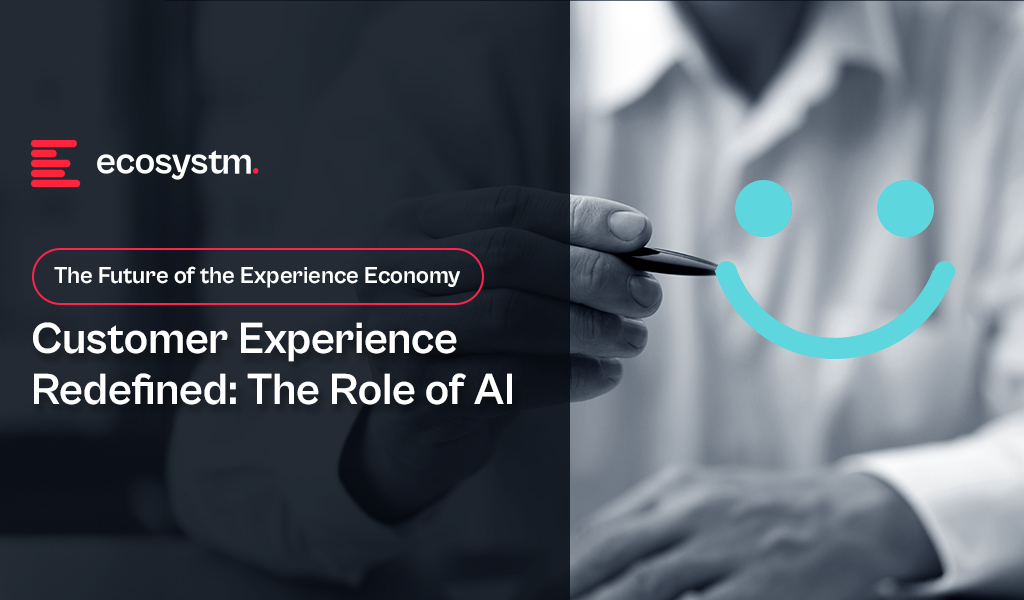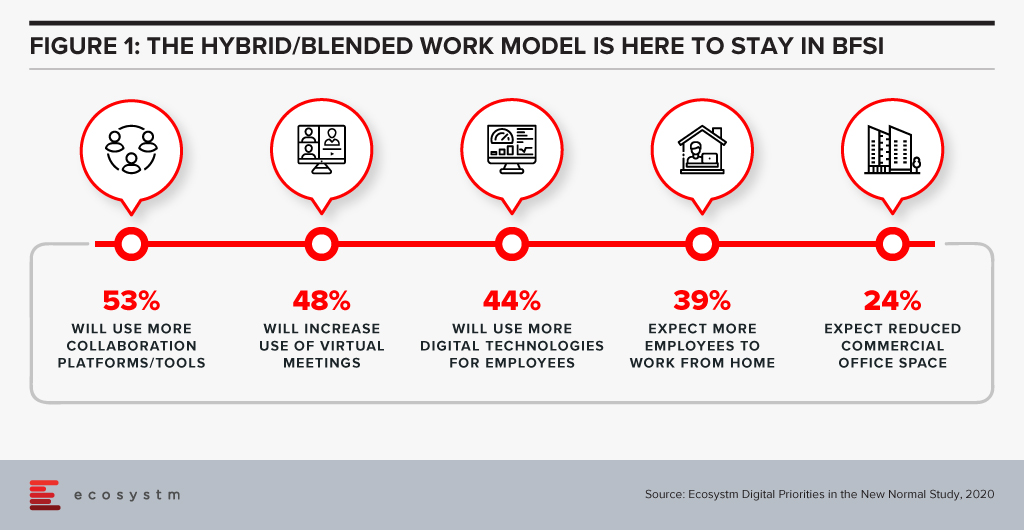AI has become a business necessity today, catalysing innovation, efficiency, and growth by transforming extensive data into actionable insights, automating tasks, improving decision-making, boosting productivity, and enabling the creation of new products and services.
Generative AI stole the limelight in 2023 given its remarkable advancements and potential to automate various cognitive processes. However, now the real opportunity lies in leveraging this increased focus and attention to shine the AI lens on all business processes and capabilities. As organisations grasp the potential for productivity enhancements, accelerated operations, improved customer outcomes, and enhanced business performance, investment in AI capabilities is expected to surge.
In this eBook, Ecosystm VP Research Tim Sheedy and Vinod Bijlani and Aman Deep from HPE APAC share their insights on why it is crucial to establish tailored AI capabilities within the organisation.

In recent years, organisations have had to swiftly transition to providing digital experiences due to limitations on physical interactions; competed fiercely based on the customer experiences offered; and invested significantly in the latest CX technologies. However, in 2024, organisations will pivot their competitive efforts towards product innovation rather than solely focusing on enhancing the CX.

This does not mean that organisations will not focus on CX – they will just be smarter about it!
Ecosystm analysts Audrey William, Melanie Disse, and Tim Sheedy present the top 5 Customer Experience trends in 2024.
Click here to download ‘Ecosystm Predicts: Top 5 CX Trends in 2024’ as a PDF.
#1 Customer Experience is Due for a Reset
Organisations aiming to improve customer experience are seeing diminishing returns, moving away from the significant gains before and during the pandemic to incremental improvements. Many organisations experience stagnant or declining CX and NPS scores as they prioritise profit over customer growth and face a convergence of undifferentiated digital experiences. The evolving digital landscape has also heightened baseline customer expectations.
In 2024, CX programs will be focused and measurable – with greater involvement of Sales, Marketing, Brand, and Customer Service to ensure CX initiatives are unified across the entire customer journey.
Organisations will reassess CX strategies, choosing impactful initiatives and aligning with brand values. This recalibration, unique to each organisation, may include reinvesting in human channels, improving digital experiences, or reimagining customer ecosystems.
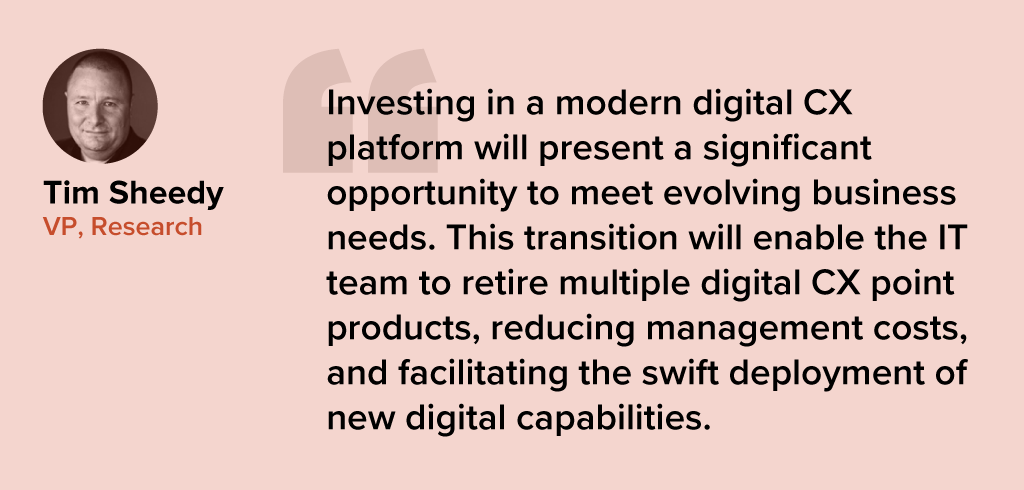
#2 Sentiment Analysis Will Fuel CX Improvement
Organisations strive to design seamless customer journeys – yet they often miss the mark in crafting truly memorable experiences that forge emotional connections and turn customers into brand advocates.
Customers want on-demand information and service; failure to meet these expectations often leads to discontent and frustration. This is further heightened when organisations fail to recognise and respond to these emotions.
Sentiment analysis will shape CX improvements – and technological advancements such as in neural network, promise higher accuracy in sentiment analysis by detecting intricate relationships between emotions, phrases, and words.
These models explore multiple permutations, delving deeper to interpret the meaning behind different sentiment clusters.
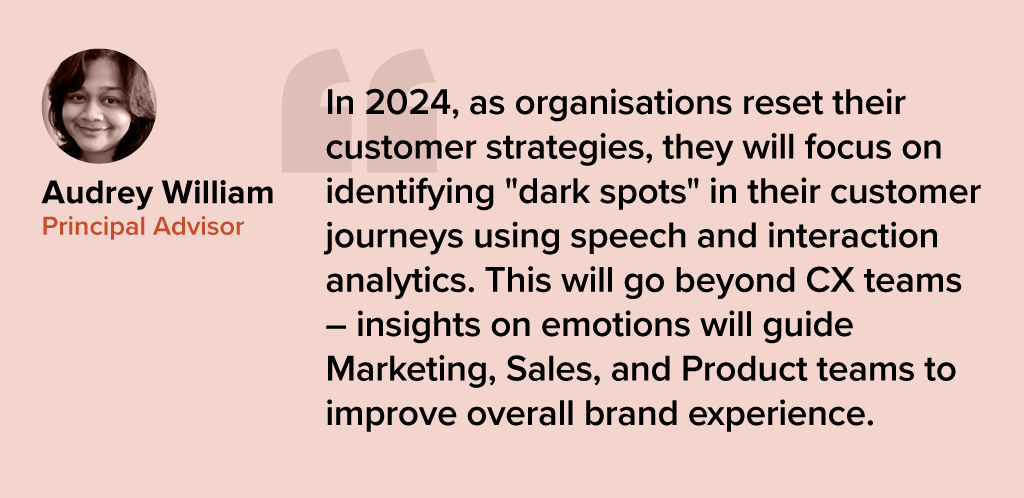
#3 AI Will Elevate VoC from Surveys to Experience Improvement
In 2024, AI technologies will transform Voice of Customer (VoC) programs from measurement practices into the engine room of the experience improvement function.
The focus will move from measurement to action – backed by AI. AI is already playing a pivotal role in analysing vast volumes of data, including unstructured and unsolicited feedback. In 2024, VoC programs will shift gear to focus on driving a customer centric culture and business change. AI will augment insight interpretation, recommend actions, and predict customer behaviour, sentiment, and churn to elevate customer experiences (CX).
Organisations that don’t embrace an AI-driven paradigm will get left behind as they fail to showcase and deliver ROI to the business.
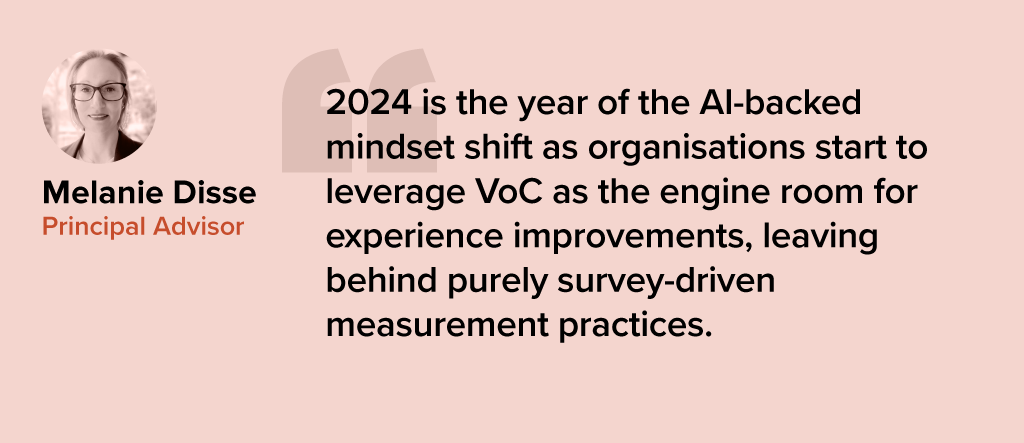
#4 Generative AI Platforms Will Replace Knowledge Management Tools
Most organisations have more customer knowledge management tools and platforms than they should. They exist in the contact centre, on the website, the mobile app, in-store, at branches, and within customer service. There are two challenges that this creates:
- Inconsistent knowledge. The information in the different knowledge bases is different and sometimes conflicting.
- Difficult to extract answers. The knowledge contained in these platforms is often in PDFs and long form documents.
Generative AI tools will consolidate organisational knowledge, enhancing searchability.
Customers and contact centre agents will be able to get actual answers to questions and they will be consistent across touchpoints (assuming they are comprehensive, customer-journey and organisation-wide initiatives).

#5 Experience Orchestration Will
Accelerate
Despite the ongoing effort to streamline and simplify the CX, organisations often implement new technologies, such as conversational AI, digital and social channels, as independent projects. This fragmented approach, driven by the desire for quick wins using best-in-class point solutions results in a complex CX technology architecture.
With the proliferation of point solution vendors, it is becoming critical to eliminate the silos. The fragmentation hampers CX teams from achieving their goals, leading to increased costs, limited insights, a weak understanding of customer journeys, and inconsistent services.
Embracing CX unification through an orchestration platform enables organisations to enhance the CX rapidly, with reduced concerns about tech debt and legacy issues.
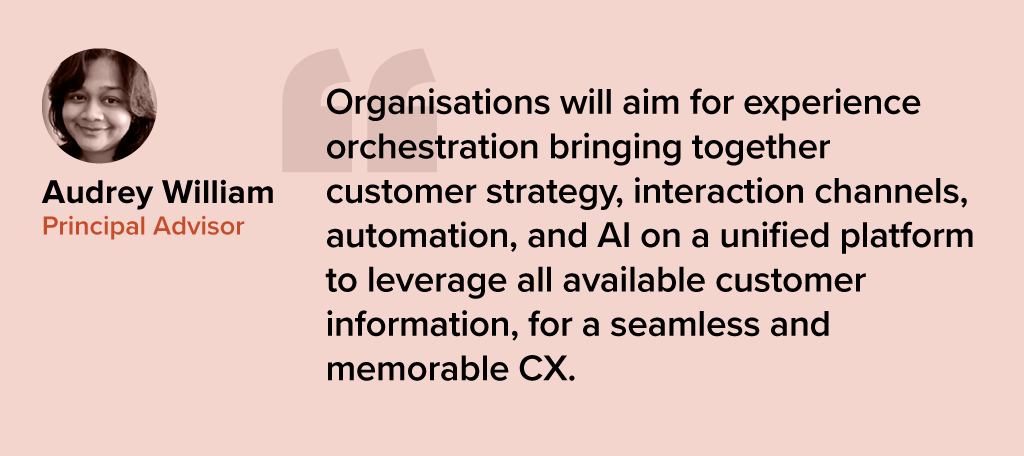

The impact of AI on Customer Experience (CX) has been profound and continues to expand. AI allows a a range of advantages, including improved operational efficiency, cost savings, and enhanced experiences for both customers and employees.
AI-powered solutions have the capability to analyse vast volumes of customer data in real-time, providing organisations with invaluable insights into individual preferences and behaviour. When executed effectively, the ability to capture, analyse, and leverage customer data at scale gives organisations significant competitive edge. Most importantly, AI unlocks opportunities for innovation.
Read on to discover the transformative impact of AI on customer experiences.
Click here to download ‘Customer Experience Redefined: The Role of AI’ as a PDF

Agents are the biggest assets in a contact centre and agent attrition is not a new challenge – 40% of contact centres globally state that high staff turnover is one of the challenges of driving consistent customer experience (CX). The ability to find the right talent has been equally challenging. The pandemic and the hybrid work model have made it harder to manage the onboarding, training, and the other processes required to get the agent up to speed on the job. Despite the challenges contact centres need a strong focus on managing the experience for the agents – they are a company’s front-line staff and the experience they deliver to the customers has an immense impact on the brand.
Workforce Experience Management (WEM) tools have gone beyond just scheduling – they are now able to leverage data and analytics to allow agents more control over their performance and their work preferences. Additionally, Agent Assist and knowledge management solutions give contact centre agents dynamic access to intelligent data. Ecosystm research shows that contact centres across the globe are ramping up their investments in employee experience (EX) technologies (Figure 1). They are focused on simplifying agent workload and offering more flexibility.

How do you elevate the Agent Experience in the Hybrid Work Model?
- Encourage shift bidding. Build flexible scheduling and shift bidding into the company culture. Agents should be encouraged to work on a schedule that works best for them. If you are employing part-timers, retirees or you have agents working from home, you have to factor in their home commitments. Additionally allowing them to bid and openly talk to their managers and colleagues about swapping shifts demonstrates a company culture of open communication and collaboration. So, in essence, this is not a scheduling conversation, but an image-building exercise. You will be able to attract more talent, in an industry where it is hard to retain talent.
- Evaluate your agents’ strengths in voice and self-service channels. Not all agents are good with voice calls and this can sometimes be overlooked by contact centre leaders. Your organisation’s brand image depends on the customer care your employees provide. Voice calls are still important; despite the increase in the adoption of AI and automation, the human touch remains critical. It is important for agents to be as authentic as possible on calls. Assigning the right agent to the right channel, keeping in mind their strengths and weaknesses will help your organisation to maintain the human touch. For example, some agents may be able to multitask well and are better prepared to manage multiple channels simultaneously.
- Your knowledge system is critical. Make sure it is relevant and not outdated! Your agents have limited time on their hands. They often need information urgently, especially when dealing with a difficult customer. An updated knowledge system allows your agents to be consistent in their messages and their delivery. This helps agents to meet the AHT, FCR and other metrics and reduces human errors. Nearly 60% of contact centres globally rate improving knowledge management systems as a CX priority. There is still a lot of data inconsistency and irrelevance which needs to be worked through. An accurate and updated knowledge management system is critical, and it should be ONE source of truth. For compliance reasons, data consistency is critical. Also, the search for the information must be easy and only relevant articles and information should be pushed to live agents. The need to access multiple knowledge systems and CRM tools creates additional stress on agents.
- Give your agents access to call recordings. When your agents have access to the call recordings, they can evaluate how they have performed; and reflect and improve on the outcomes at their own pace. This will also allow them to spot the mistakes they are making, often prompting them to reach out to their manager and/or colleagues for help on how to avoid them. Often managers have access to sentiment analysis applications to spot issues from the tones of the agents and the customers. This can be useful in situations where the agent might have provided the right answers, but the customer is not fully satisfied. Giving equal access to the agents empowers them to find ways of improving the CX they deliver.
- Invest in advanced technologies around forecasting and scheduling. AI and self-adjusting algorithms are important for accurate and real-time forecasts. It is challenging to sometimes predict the volume of voice and non-voice transactions in a day. API-based tools can integrate data from different sources such as web chat, social media, voice, and workforce experience management solutions for an accurate view of the workload, including wait times. The analytics should be able to alert you of potential gaps before the resource shortfall, allowing you to plan your staffing requirements better.
Conclusion
The hybrid work model has its challenges for the contact centre industry. The ability of agents to walk up to their supervisors or raise their hands when they have an issue has been impacted. While it is important to focus on how agents will perform their jobs remotely, it is equally important to evaluate the overall experience including training, scheduling and forecasting workload. AI and automation, WEM and knowledge solutions can help reduce confusion and ease the workload for the agents. An integrated EX platform that uses a single dashboard will be most beneficial for agents to navigate for information. What is important is to have a new approach to managing EX. This will help your organisation immensely in attracting and retaining talent.

Organisations are finding that the ways to do work and conduct business are evolving rapidly. It is evident that we cannot use the perspectives from the past as a guide to the future. As a consequence both leaders and employees are discovering and adapting both their work and their expectations from it. In general, while job security concerns still command a big mindshare, the simpler productivity measures are evolving to more nuanced wellness measures. This puts demands on the CHRO and the leadership team to think about company, customer and people strategy as one holistic way of working and doing business.
Organisations will have to re-think their people and technology to evolve their Future of Work policies and strategise their Future of Talent. There are multiple dimensions that will require attention.
Hybrid is Becoming Mainstream
It is clear that hybrid workplaces are here to stay. Ecosystm research finds that in 2021 BFSI organisations will use more collaboration tools and platforms, and virtual meetings (Figure 1). Nearly 40% expect more employees to work from home, but only about a quarter of organisations are looking to reduce their physical workspaces. Organisations will give more choice to employees in the location of their work – and employees will choose to work from where they are more productive. The Hybrid model will be more mainstream than it has been in the last few months.
Companies are coming to terms with the fact that there is no single answer to operating in the new world. Experimentation and learnings are continuously captured to create the right workforce and workplace model that works best. Agility both in terms of being able to undersand the market as well as quickly adapt is becoming quite important. Thus being able to use different models and ways of working at the same time is the new norm.
Technology and Talent are Core
Talent and tech are the two core pillars that companies need to look at to be successful against their competition. It is becoming imperative to create synergy between the two to deliver a superior value proposition to customers. Companies that are able to bring the customer and employee experience journeys together will be able to create better value. HR tech stacks need to evolve to be more deliberate in the way they link the employee experience, customer experience, and the culture of the organisation. That’s how the Employee Value Proposition (EVP) comes to life on a day-to-day basis to the employers. With evolving work models, the tech stack is a key EVP pillar.
Governments will also need to partner with industry to make such talent available. Singapore is rolling out a new “Tech.Pass” to support the entry of up to 500 proven founders, leaders and experts from top tech companies into Singapore. Its an extension of the Tech@SG program launched in 2019, to provide fast-growing companies greater assurance and access to the talent they need. The EDB will administer the pass, supported by the Ministry of Manpower.
Attracting the Right Talent
Talent has always been difficult to find. Even with globalisation, significant investment of time and resources is needed to find and relocate talent to the right geography. In many instances this was not possible given the preferences of the candidates and/or the hiring managers. COVID-19 has changed this drastically. Remote working and distributed teams have become acceptable. With limitations on immigration and travel for work, there is a lot more openness to finding and hiring talent from outside the traditional talent pool.
However it is not as simple as it seems. The cost per applicant (CPA) – the cost to convert a job seeker to a job applicant – had been averaging US$11-12 throughout 2019 according to recruiting benchmark data from programmatic recruitment advertising provider, Appcast. But, the impact of COVID-19 saw the CPA reach US$19 in June – a 60% increase. I expect that finding right talent is going to be a “needle in a haystack” issue. But this is only one side of the coin – the other aspect is that the talent profile needed to be successful in roles that are all remote or hybrid is also significantly different from what it was before. Companies need to pay special attention to what kind of people they would like to hire in these new roles. Without this due consideration it is very likely that there would be difficulty in on-boarding and making these new hires successful within the organisation.
Automation Augmentation and Skills
The pace at which companies are choosing to automate or apply AI is increasing. This is changing the work patterns and job requirements for many roles within the industry. According to the BCG China AI study on the financial sector 23% of the roles will be replaced by AI by 2027. The roles that will not be replaced will need a higher degree of soft skills, critical thinking and creativity. However, automation is not the endgame. Firms that go ahead with automation without considering the implications on the business process, and the skills and roles it impacts will end up disrupting the business and customer experience. Firms will have to really design their customer journeys, their business processes along with roles and capabilities needed. Job redesign and reskilling will be key to ensuring a great customer experience
Analytics is Inadequate Without the Right Culture
Data-driven decision-making as well as modelling is known to add value to business. We have great examples of analytics and data modelling being used successfully in Attrition, Recruitment, Talent Analytics, Engagement and Employee Experience. The next evolution is already underway with advanced analytics, sentiment analysis, organisation network analysis and natural language processing (NLP) being used to draw better insights and make people strategies predictive. Being able to use effective data models to predict and and draw insights will be a key success factor for leadership teams. Data and bots do not drive engagement and alignment to purpose – leaders do. Working to promote transparency of data insights and decisions, for faster response, to champion diversity, and give everyone a voice through inclusion will lead to better co-creation, faster innovation and an overall market agility.
Creating a Synergy
We are seeing a number of resets to what we used to know, believe and think about the ways of working. It is a good time to rethink what we believe about the customer, business talent and tech. Just like customer experience is not just about good sales skills or customer service – the employee experience and role of Talent is also evolving rapidly. As companies experiment with work models, technology and work environment, there will a need to constantly recalibrate business models, job roles, job technology and skills. With this will come the challenge of melding the pieces together within the context of the entire business without falling into the trap of siloed thinking. Only by bringing together businesses processes, talent, capability evolution, culture and digital platforms together as one coherent ecosystem can firms create a winning formula to create a competitive edge.
Singapore FinTech Festival 2020: Talent Summit
For more insights, attend the Singapore FinTech Festival 2020: Infrastructure Summit which will cover topics on Founders success and failure stories, pandemic impact on founders and talent development, upskilling and reskilling for the future of work.

In 2018, DBS Bank came together with AI start-up impress.ai to implement Jim – Job Intelligence Maestro – a chatbot that helps the bank shortlist candidates for positions in their wealth planning team. This is primarily for screening for entry-level positions. Apart from process efficiency, the introduction of AI in the recruitment process is also aimed at eliminating bias and objectively finding the right candidate for the right job. The DBS chatbot uses cognitive and personality tests to assess candidates, as well as providing them with answers to the candidates’ frequently asked questions. The scores are then passed on to actual recruiters who continue with the rest of the recruitment process. DBS claims that they have curtailed the initial assessment time of each applicant by an average of 22 minutes.
While some organisations have started evaluating the use of AI in their HR function, it has not reached a mass-market yet. In the global Ecosystm AI study, we find that nearly 88% of global organisations do not involve HR in their AI projects. However, the use cases of AI in HR are many and the function should be an active stakeholder in AI investments in customer-focused industries.
Telstra employs AI to vet Applicants
Last month, Australia’s biggest telecommunications provider Telstra announced its plans to hire 1,000 temporary contact centre staff in Australia to meet the surge in demand amidst the global pandemic. In response to the openings, Telstra received overwhelming 19,000 applications to go through and filter, with limited workforce. To make the recruitment process more efficient, the company has been using AI to filter the applications – and has been able to make initial offers two weeks from the screening. The AI software takes the candidates’ inputs and processes them to find the right match for the required skills. The candidates are also presented with cognitive games to measure their assessment scores.
Ecosystm Principal Advisor, Audrey William speaks about the pressure on companies such as Telstra to hire faster for their contact centres. “Several organisations are needing to replace agents in their offshore locations and hire agents onshore. Since this is crucial to the customer experience they deliver, speed is of essence.” However, William warns that the job does not stop with recruiting the right number of agents. “HR teams will need to follow through with a number of processes including setting up home-based employees, training them adequately for the high volume of voice and non-voice interactions and compliance and so on.”
The Future of AI in HR
William sees more companies adopting AI in their HR practices in the Workplace of the Future – and the role of AI will not be restricted to recruitment alone. “A satisfied employee will go the extra mile to deliver better customer experience and it is important to keep evaluating how satisfied your employees are. AI-driven sentiment analysis will replace employee surveys which can be subjective in nature. This will include assessing the spoken words and the emotions of an individual which cannot be captured in a survey.”
In the future, William sees an intelligent conversational AI platform as an HR feedback and engagement platform for staff to engage on what they would like to see, what they are unhappy about, their workplace issues, what they consider their successes and so on. This will be actionable intelligence for HR teams. “But for a conversational AI platform to work well and to encourage users within the organisation to use it, it must be designed well. While it has to be engaging to ensure employee uptake, the design does not stop at user experience. It must include a careful evaluation of the various data sets that should be assessed and how the AI can get easy access to that data.”
AI and Ethics
With the increased use of AI, the elephant in the room is always ethical considerations. While the future may see HR practices using conversational AI platforms, how ethical is it to evaluate your employees constantly and what will be the impact on them? How will the organisation use that data? Will it end up giving employers the right reasons to reduce manpower at will? These and allied issues are areas where stricter government mandates are required.
Going back to AI-assisted recruitment, William warns, “Bias must be assessed from all angles – race, education, gender, voice, accents. Whilst many platforms claim that their solution removes bias, the most important part of getting this right is to make sure that the input data is right from the start. The outcomes desired from the process must be tested – and tested in many different ways – before the organisation can start using AI to eliminate bias. There is also the added angle of the ethical use of the data.”


